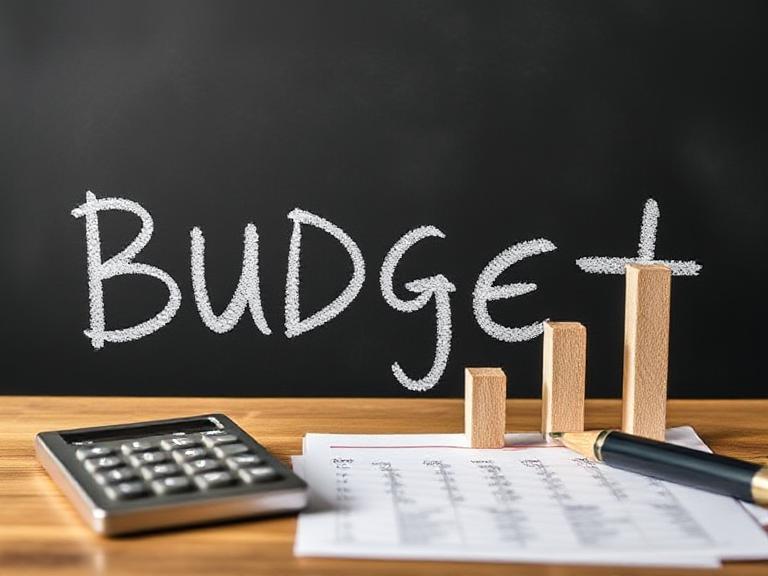The Ultimate Guide to Budgeting for Interior Design
Spend Smart, Design Beautifully
Interior design is about more than just making a space look good, it’s about creating an environment that feels right, functions well, and reflects who you are. But let’s be honest: designing a home or even a single room can get expensive very quickly.
That’s why budgeting is one of the most important steps in the design process and yet, it’s often the most overlooked.
In this guide, we’ll walk you through how to set a realistic budget, understand where to splurge and where to save, and navigate costs like design fees and product markups. Whether you’re working with a designer or going the DIY route, this is the starting point you need.

1. How to Set a Realistic Interior Design Budget
Before choosing colors, tiles, or light fixtures, you need a clear understanding of how much you can and should spend.
Step-by-Step: Creating Your Design Budget
Define the Scope of the Project
Are you redesigning one room, an entire home, or a commercial space? The size and complexity of the project greatly affect the cost.
Set Your Overall Budget Cap
Ask yourself:
- What is the maximum amount I’m willing (and able) to spend in ₹?
- Will I pay in full now, or in stages?
- Am I planning to finance any part of this?
Break Down Your Budget into Categories
A well-structured budget should be broken into clear components. For example:
- Furniture & Decor: 40%
- Renovations or Construction: 30%
- Design Fees: 10–20%
- Lighting & Fixtures: 10%
- Contingency Fund: 10–15%
Do Market Research
Browse online stores, visit showrooms, and get quotes in rupees. You’ll quickly learn how much things really cost, and where you might need to adjust expectations.
2. Where to Splurge vs. Where to Save
Your budget isn’t just about how much you spend, it’s about where you spend. Not everything in your space needs to be high-end. Some pieces are worth the investment, while others can be budget-friendly without sacrificing style.
When to Splurge:
- Sofas and Beds: These are used daily and should offer comfort, durability, and style.
- Lighting Fixtures: A standout chandelier or designer lamp can completely transform a space.
- Cabinetry or Built-ins: Especially in kitchens and bathrooms, poor-quality installations lead to problems later.
- Art & Statement Pieces: These give your space personality and often stay with you for years.
When to Save:
- Accent Decor: Trendy pieces like vases, wall art, or throw pillows can be updated seasonally.
- Paint: A fresh coat can change a room, and quality doesn’t always mean expensive.
- Side Tables or Shelving: You can find affordable and stylish options from mid-range retailers or secondhand stores.
- Rugs & Curtains: These are available in many price ranges,splurge only if it’s a focal point.
Example: You might spend ₹2,25,000 on a timeless, high-quality sofa but only ₹15,000 on trendy side chairs from an outlet store. That’s smart design.
3. Understanding Design Fees and Product Markups
If you’re hiring an interior designer, it’s essential to understand how their pricing works.
Common Fee Structures:
- Flat Fee: A fixed amount for the entire project. Great for clearly defined scopes.
- Hourly Rate: Charged based on the time spent. Often used for smaller or evolving projects.
- Percentage of Budget: A fee based on the total cost of the project, typically 10–25%.
Product Markups:
Designers often source furniture, fixtures, and materials from trade-only vendors. They may apply a markup (commonly 10–35%) to cover procurement, logistics, and warranty services.
Important Questions to Ask:
- What does your fee include?
- Will I receive trade discounts, or is a markup applied?
- Are there any additional charges I should expect?
Knowing this upfront helps avoid surprises and ensures transparency.
4. Plan for the Unexpected
Every project has its hiccups. Prices increase, items go out of stock, construction reveals hidden issues, it’s all part of the process.
Always include a 10–15% contingency buffer in your budget. This cushion can cover:
- Delivery delays or changes in availability
- Repairs or upgrades discovered mid-renovation
- Design changes as your vision evolves
Example: If your total project budget is ₹15,00,000, keep ₹1,50,000 to ₹2,25,000 set aside for unexpected costs.
5. Tips to Stay on Budget Without Compromising Design
Here’s how to get the most style for your spend:
- Mix High and Low: Pair a designer dining table with affordable chairs from mid-range retailers or vintage markets.
- Reuse and Reimagine: Paint or reupholster existing furniture instead of buying new.
- Phase Your Project: Break the project into stages to avoid financial strain.
- Use Mood Boards & Floor Plans: Visual planning helps avoid costly mistakes.
- Track Every Expense: Use a spreadsheet or budgeting app to stay organized and accountable.
Final Thoughts: Design with Intention, Not Just Rupees
Interior design is an investment in how you live and feel in your space. A smart budget ensures you’re making thoughtful choices — not reactive ones. Whether your total spend is ₹50,000 or ₹50,00,000, a clear financial plan gives you creative control, peace of mind, and a result you’ll love.
Remember: beautiful design is not about spending more, it’s about spending wisely.
Ready to transform your space without breaking the bank?
At Maparc Associates, we specialize in creating stunning interiors that perfectly match your style and budget. Whether you need expert guidance on budgeting or a full design makeover, our team is here to bring your vision to life — smartly and beautifully.
Contact Maparc Associates today to schedule your free consultation and start planning your dream space!